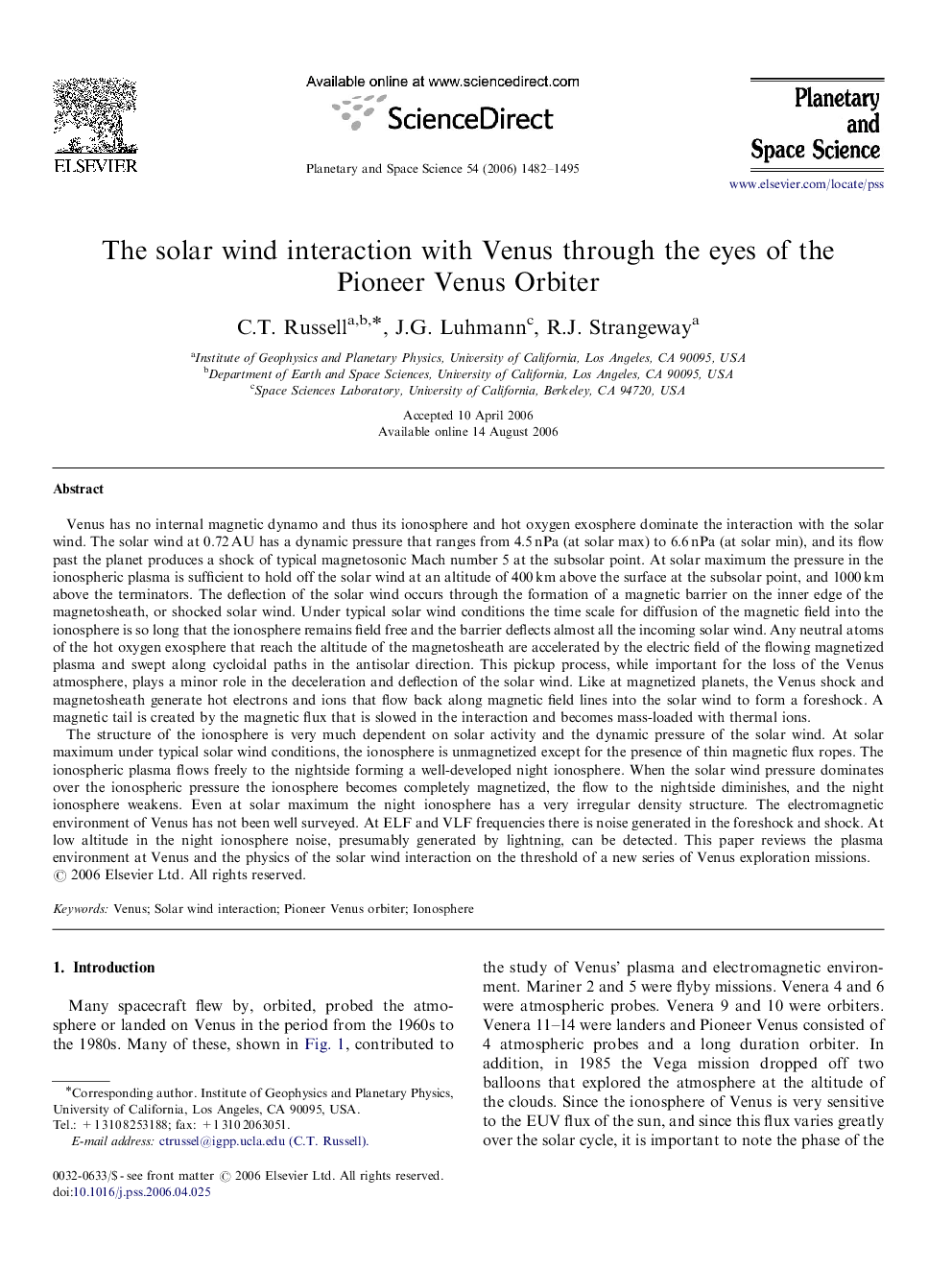| کد مقاله | کد نشریه | سال انتشار | مقاله انگلیسی | نسخه تمام متن |
|---|---|---|---|---|
| 1782408 | 1523975 | 2006 | 14 صفحه PDF | دانلود رایگان |

Venus has no internal magnetic dynamo and thus its ionosphere and hot oxygen exosphere dominate the interaction with the solar wind. The solar wind at 0.72 AU has a dynamic pressure that ranges from 4.5 nPa (at solar max) to 6.6 nPa (at solar min), and its flow past the planet produces a shock of typical magnetosonic Mach number 5 at the subsolar point. At solar maximum the pressure in the ionospheric plasma is sufficient to hold off the solar wind at an altitude of 400 km above the surface at the subsolar point, and 1000 km above the terminators. The deflection of the solar wind occurs through the formation of a magnetic barrier on the inner edge of the magnetosheath, or shocked solar wind. Under typical solar wind conditions the time scale for diffusion of the magnetic field into the ionosphere is so long that the ionosphere remains field free and the barrier deflects almost all the incoming solar wind. Any neutral atoms of the hot oxygen exosphere that reach the altitude of the magnetosheath are accelerated by the electric field of the flowing magnetized plasma and swept along cycloidal paths in the antisolar direction. This pickup process, while important for the loss of the Venus atmosphere, plays a minor role in the deceleration and deflection of the solar wind. Like at magnetized planets, the Venus shock and magnetosheath generate hot electrons and ions that flow back along magnetic field lines into the solar wind to form a foreshock. A magnetic tail is created by the magnetic flux that is slowed in the interaction and becomes mass-loaded with thermal ions.The structure of the ionosphere is very much dependent on solar activity and the dynamic pressure of the solar wind. At solar maximum under typical solar wind conditions, the ionosphere is unmagnetized except for the presence of thin magnetic flux ropes. The ionospheric plasma flows freely to the nightside forming a well-developed night ionosphere. When the solar wind pressure dominates over the ionospheric pressure the ionosphere becomes completely magnetized, the flow to the nightside diminishes, and the night ionosphere weakens. Even at solar maximum the night ionosphere has a very irregular density structure. The electromagnetic environment of Venus has not been well surveyed. At ELF and VLF frequencies there is noise generated in the foreshock and shock. At low altitude in the night ionosphere noise, presumably generated by lightning, can be detected. This paper reviews the plasma environment at Venus and the physics of the solar wind interaction on the threshold of a new series of Venus exploration missions.
Journal: Planetary and Space Science - Volume 54, Issues 13–14, November 2006, Pages 1482–1495